2011
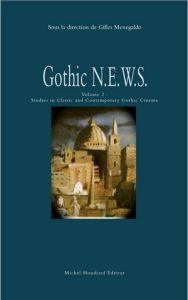 Contemporary Asian horror films seem to be particularly fond of resorting to various techniques of visual recording. This paper focuses in more detail on two such relatively recent films: a Hong Kong production Abnormal Beauty (2004), directed/produced by Oxide and Danny Pang and a Thai film Shutter (2004), directed by Banjong Pisanthanakun and Parkpoom Wongpoom, both of which feature professional photographers as main protagonists and resort consequently to the notion of photography as a key concept for the narrative structure and the films’ visual organisation. The paper will examine the ways the two films exploit photography’s specific relation to death and the afterlife, raising the question whether the theoretical discourse of photography can potentially “westernise” the narrative technique of an Asian film.
Contemporary Asian horror films seem to be particularly fond of resorting to various techniques of visual recording. This paper focuses in more detail on two such relatively recent films: a Hong Kong production Abnormal Beauty (2004), directed/produced by Oxide and Danny Pang and a Thai film Shutter (2004), directed by Banjong Pisanthanakun and Parkpoom Wongpoom, both of which feature professional photographers as main protagonists and resort consequently to the notion of photography as a key concept for the narrative structure and the films’ visual organisation. The paper will examine the ways the two films exploit photography’s specific relation to death and the afterlife, raising the question whether the theoretical discourse of photography can potentially “westernise” the narrative technique of an Asian film.

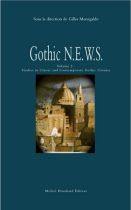
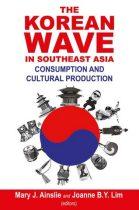
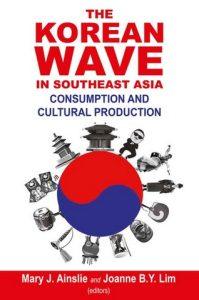 This paper examines Korean influences on contemporary Thai cinema in terms of genre development, narrative structure and co-production. It will discuss the emergence of the strong “masculinised” heroine in Thai comedies, re-configuration of the horror, comedy and action thriller genres, changes in the narrative strategies of 21st century Thai films, and the results of creative co-production between Thailand and Korea.
This paper examines Korean influences on contemporary Thai cinema in terms of genre development, narrative structure and co-production. It will discuss the emergence of the strong “masculinised” heroine in Thai comedies, re-configuration of the horror, comedy and action thriller genres, changes in the narrative strategies of 21st century Thai films, and the results of creative co-production between Thailand and Korea.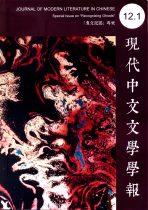
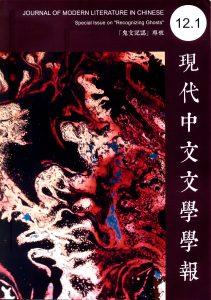 With their themes of ghosts, violence and monstrosity, horror films have been instrumental in capturing the ghostly returns of collective trauma. Thai horror, unsurprisingly, also cannot disassociate itself from history. Through their ghosts and, more recently, through their turn to “body horror,” contemporary Thai horror films come to terms with the “wounds” in the country’s social fabric. The strategies of archivization of Thai history and cultural memory used in these films vary, since some traumatic incidents in Thai history have been denied the right to be remembered by the state apparatus. Other, less politically-repressed events, such as murders, accidents, or cases of gross negligence are meticulously reconstructed from available authentic sources and reproduced in Thai horror films, which take on the function of becoming the archives of Thai popular memory. This article discusses Thai horror films’ strategies of archivization of Thailand’s past.
With their themes of ghosts, violence and monstrosity, horror films have been instrumental in capturing the ghostly returns of collective trauma. Thai horror, unsurprisingly, also cannot disassociate itself from history. Through their ghosts and, more recently, through their turn to “body horror,” contemporary Thai horror films come to terms with the “wounds” in the country’s social fabric. The strategies of archivization of Thai history and cultural memory used in these films vary, since some traumatic incidents in Thai history have been denied the right to be remembered by the state apparatus. Other, less politically-repressed events, such as murders, accidents, or cases of gross negligence are meticulously reconstructed from available authentic sources and reproduced in Thai horror films, which take on the function of becoming the archives of Thai popular memory. This article discusses Thai horror films’ strategies of archivization of Thailand’s past.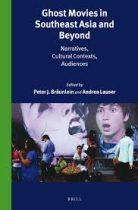
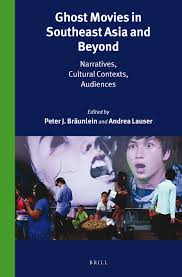 Thai spiritualism, attributed by some anthropologists to the hybridization, consumerization and politicization of Thai popular religion, can be seen as having significant consequences for the study of Thai horror cinema, since it allows for both a metaphorical (modern) and literal (pre-modern) reading of its ghost movies. On the literal level, these movies function as a fictional retelling of real or hypothetically possible spiritual encounters, and by tapping into the personal experience of their audience they can be found particularly frightening. On another hand, if the filmmakers stray too far from the audience’s expectations they risk getting seriously criticized for producing an “unconvincing” film narrative. Adding to this, the movies themselves are frequently being produced and promoted in a variety of supernatural contexts, including making offerings to the spirits, employing mediums and fortune tellers, or documenting instances of haunting on set. Last but not least, as a peculiar form of spiritual exchange, movies (though not necessarily horror movies) are commonly being screened at shrines and temples to appease local spirits and deities, or as a form of post-mortem entertainment for the recently deceased during the wake. This paper discusses these and other examples of the mutual relationship between Thai horror movies and Thai spiritualism and suggests a connection between the popular animistic, mediumistic and religious practices of the Thais and their love of horror cinema.
Thai spiritualism, attributed by some anthropologists to the hybridization, consumerization and politicization of Thai popular religion, can be seen as having significant consequences for the study of Thai horror cinema, since it allows for both a metaphorical (modern) and literal (pre-modern) reading of its ghost movies. On the literal level, these movies function as a fictional retelling of real or hypothetically possible spiritual encounters, and by tapping into the personal experience of their audience they can be found particularly frightening. On another hand, if the filmmakers stray too far from the audience’s expectations they risk getting seriously criticized for producing an “unconvincing” film narrative. Adding to this, the movies themselves are frequently being produced and promoted in a variety of supernatural contexts, including making offerings to the spirits, employing mediums and fortune tellers, or documenting instances of haunting on set. Last but not least, as a peculiar form of spiritual exchange, movies (though not necessarily horror movies) are commonly being screened at shrines and temples to appease local spirits and deities, or as a form of post-mortem entertainment for the recently deceased during the wake. This paper discusses these and other examples of the mutual relationship between Thai horror movies and Thai spiritualism and suggests a connection between the popular animistic, mediumistic and religious practices of the Thais and their love of horror cinema.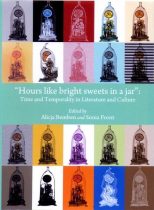
 This chapter discusses Bangkok time in line with the studies of city life that draw attention to the everyday experience, urban practices, movement, memory and performing the city, this paper engages in a discussion of temporal cities realized through the symbolic, ritualistic performance of their inhabitants and manifestations of collective memory on the example of Bangkok, a mega-metropolis known for its rather precarious relationship with reality. Though all four of Pile’s phantasmagorias can be successfully applied to a reimagining of Bangkok, this chapter will focus on the two most obvious categories – ghosts and magic, exploring their connection to the city’s past and present and the lingering temporalities they leave behind.
This chapter discusses Bangkok time in line with the studies of city life that draw attention to the everyday experience, urban practices, movement, memory and performing the city, this paper engages in a discussion of temporal cities realized through the symbolic, ritualistic performance of their inhabitants and manifestations of collective memory on the example of Bangkok, a mega-metropolis known for its rather precarious relationship with reality. Though all four of Pile’s phantasmagorias can be successfully applied to a reimagining of Bangkok, this chapter will focus on the two most obvious categories – ghosts and magic, exploring their connection to the city’s past and present and the lingering temporalities they leave behind.
 S.P. Somtow’s novel The Other City of Angels (2008) portrays Bangkok as a Gothic metropolis: a city stuck between illusion and reality, where dreams and nightmares come to life, simultaneously backwards and modern, spiritual and material, and full of peculiarities that make one doubt whether such a place exists at all. It is a temple to consumerism filled with fortune tellers and high society serial killers that for Somtow, a composer himself, can best be expressed through the jarringly haunting sounds of Béla Bartók’s music. The Other City of Angels (2008) is a modern retelling of the Gothic tale of Bluebeard’s wife and her fatal discovery of her husband’s dark secret, and – true to its Gothic origins – it is filled with romance, terror, and laughter. This paper focuses on the novel’s comic dimension and discusses Somtow’s use of dark humour and the Gothic grotesque as a strategy to exoticize Bangkok for foreign readers by simultaneously reinforcing and defying Western stereotypes of Bangkok as the Oriental city, once (in)famously described as the city of temples and prostitutes. The paper also explores the way comic elements are used to offset the critical commentary on class division and social inequality that are seen as ingrained in the fabric of Thai culture and further aggravated by the materialism and consumerism characteristic of contemporary Thai society.
S.P. Somtow’s novel The Other City of Angels (2008) portrays Bangkok as a Gothic metropolis: a city stuck between illusion and reality, where dreams and nightmares come to life, simultaneously backwards and modern, spiritual and material, and full of peculiarities that make one doubt whether such a place exists at all. It is a temple to consumerism filled with fortune tellers and high society serial killers that for Somtow, a composer himself, can best be expressed through the jarringly haunting sounds of Béla Bartók’s music. The Other City of Angels (2008) is a modern retelling of the Gothic tale of Bluebeard’s wife and her fatal discovery of her husband’s dark secret, and – true to its Gothic origins – it is filled with romance, terror, and laughter. This paper focuses on the novel’s comic dimension and discusses Somtow’s use of dark humour and the Gothic grotesque as a strategy to exoticize Bangkok for foreign readers by simultaneously reinforcing and defying Western stereotypes of Bangkok as the Oriental city, once (in)famously described as the city of temples and prostitutes. The paper also explores the way comic elements are used to offset the critical commentary on class division and social inequality that are seen as ingrained in the fabric of Thai culture and further aggravated by the materialism and consumerism characteristic of contemporary Thai society.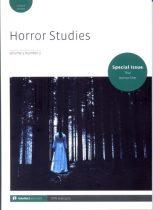
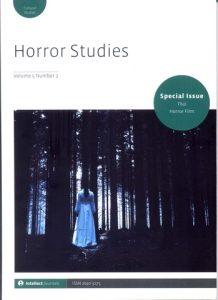 While folk horror has never been identified as exclusive to western cinema, most studies of the topic have so far been strongly aligned with western world-views, philosophies and methodologies. This makes it difficult to apply their findings to films made in non-Christian non-western countries, such as Thailand. This article discusses Banjong Pisanthanakun’s film Rang Song (The Medium) (2021) as a case in point to demonstrate how folk horror operates as a mode in Thai cinema. Building on the existing studies and modifying the current definitions of folk horror to apply them to the Thai cultural context, the article argues that Thai folk horror narratives are steeped in representations of the urban–rural divide that pit metropolitan Bangkok against low-income provinces (in particular, the northeastern region of Isan) and reflect on cultural tensions related to ethnicity and class.
While folk horror has never been identified as exclusive to western cinema, most studies of the topic have so far been strongly aligned with western world-views, philosophies and methodologies. This makes it difficult to apply their findings to films made in non-Christian non-western countries, such as Thailand. This article discusses Banjong Pisanthanakun’s film Rang Song (The Medium) (2021) as a case in point to demonstrate how folk horror operates as a mode in Thai cinema. Building on the existing studies and modifying the current definitions of folk horror to apply them to the Thai cultural context, the article argues that Thai folk horror narratives are steeped in representations of the urban–rural divide that pit metropolitan Bangkok against low-income provinces (in particular, the northeastern region of Isan) and reflect on cultural tensions related to ethnicity and class.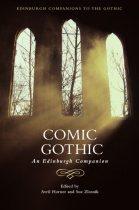
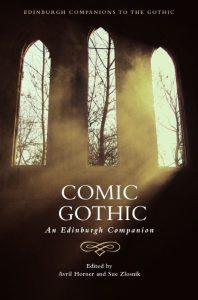 Humour has always been an integral part of Thai horror, a cinematic genre characterized by its internal hybridity and fluidity. Despite some attempts to align local productions with Western or Japanese horror, the majority of Thai horror films continue to mix scares with laughter, frequently featuring the ‘unholy trinity’ of ghosts, slapstick comedy and the kathoey – a Thai third gender category, often depicted in such productions in terms of the Gothic body that is simultaneously the site of ridicule and fear. This article examines the work of two directors who have embraced this approach – Poj Arnon and Yuthlert Sippapak. While Poj Arnon’s films have often been branded as tasteless and nonsensical, each of his 30-something productions has made a healthy profit, attesting to their popularity. In contrast, Yuthlert Sippapak’s works have baffled audiences at several international festivals and the director himself has been promoted as an inscrutable auteur. This article focuses on two major film series by these directors – Hor Taew Tak by Poj Arnon, and Buppah Rahtree by Yuthlert Sippapak. The article uses these films to illustrate a distinction between Thai horror comedies and Thai popular horror films, arguing that the comic elements are an indispensable part of their Gothic framework and a feature characteristic of Thai popular horror film in general.
Humour has always been an integral part of Thai horror, a cinematic genre characterized by its internal hybridity and fluidity. Despite some attempts to align local productions with Western or Japanese horror, the majority of Thai horror films continue to mix scares with laughter, frequently featuring the ‘unholy trinity’ of ghosts, slapstick comedy and the kathoey – a Thai third gender category, often depicted in such productions in terms of the Gothic body that is simultaneously the site of ridicule and fear. This article examines the work of two directors who have embraced this approach – Poj Arnon and Yuthlert Sippapak. While Poj Arnon’s films have often been branded as tasteless and nonsensical, each of his 30-something productions has made a healthy profit, attesting to their popularity. In contrast, Yuthlert Sippapak’s works have baffled audiences at several international festivals and the director himself has been promoted as an inscrutable auteur. This article focuses on two major film series by these directors – Hor Taew Tak by Poj Arnon, and Buppah Rahtree by Yuthlert Sippapak. The article uses these films to illustrate a distinction between Thai horror comedies and Thai popular horror films, arguing that the comic elements are an indispensable part of their Gothic framework and a feature characteristic of Thai popular horror film in general.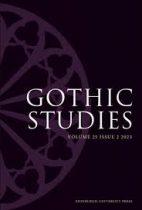
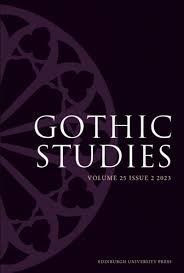 The waiting woman is a ghost who appears to be endlessly waiting – for recognition, for her lover, for a chance to reincarnate, or to exact revenge. In Asia, her roots can be found in early medieval Chinese records of the strange, arguably the oldest written ghost stories in the region. The romanticized version of this ghost, introduced in Tang Xianzu’s drama Peony Pavillion (Mudan ting, 1598), influenced many writers of Japanese kaidan (strange) stories and merged with East and Southeast Asian ghostlore that continues to inspire contemporary local fiction and films. The article proposes to read the figure of the waiting woman as a representation of the enduring myth of the submissive Asian femininity and a warning against the threat of possible female emancipation brought about by the socio-economic changes caused by modernisation.
The waiting woman is a ghost who appears to be endlessly waiting – for recognition, for her lover, for a chance to reincarnate, or to exact revenge. In Asia, her roots can be found in early medieval Chinese records of the strange, arguably the oldest written ghost stories in the region. The romanticized version of this ghost, introduced in Tang Xianzu’s drama Peony Pavillion (Mudan ting, 1598), influenced many writers of Japanese kaidan (strange) stories and merged with East and Southeast Asian ghostlore that continues to inspire contemporary local fiction and films. The article proposes to read the figure of the waiting woman as a representation of the enduring myth of the submissive Asian femininity and a warning against the threat of possible female emancipation brought about by the socio-economic changes caused by modernisation.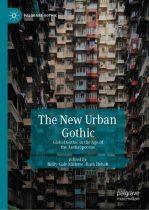
 The chapter looks at three distinct themes in what we could loosely term Asian ‘apartment horror’ films that are characteristic of the specific sociocultural contexts and urban cultural economies they represent: (1) the portrayal of the contiguous community where ghosts co-habit the space alongside the living; (2) the alienating character of modern urban communal lifestyles, where ghosts are more visible than the living, and the biggest fear of both groups is that of loneliness and isolation; and finally (3) the placement of the ghost as a representation of a failed dream of economic success that continues to drive the migration of Asian rural populations to the cities.
The chapter looks at three distinct themes in what we could loosely term Asian ‘apartment horror’ films that are characteristic of the specific sociocultural contexts and urban cultural economies they represent: (1) the portrayal of the contiguous community where ghosts co-habit the space alongside the living; (2) the alienating character of modern urban communal lifestyles, where ghosts are more visible than the living, and the biggest fear of both groups is that of loneliness and isolation; and finally (3) the placement of the ghost as a representation of a failed dream of economic success that continues to drive the migration of Asian rural populations to the cities.